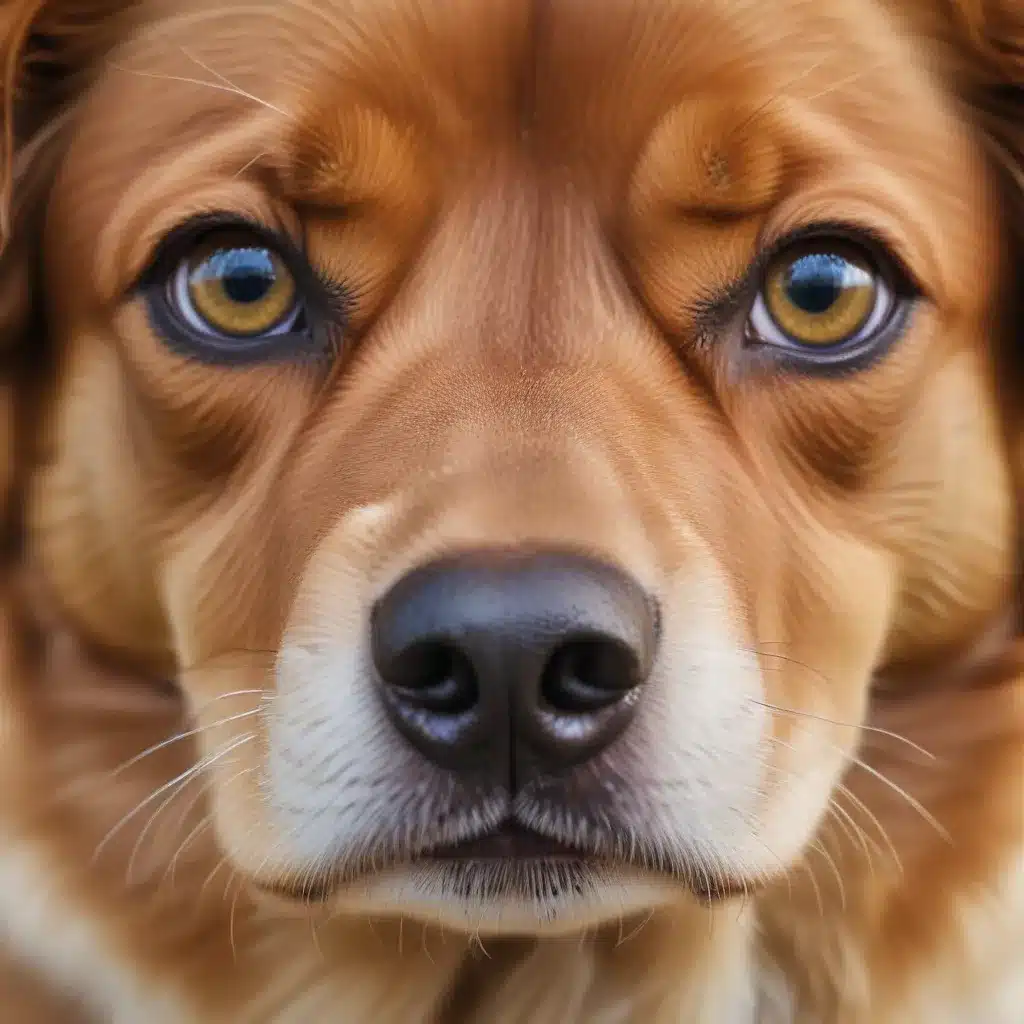
Exploring a Canine’s Perspective
Have you ever wondered what the world looks like through your dog’s eyes? As a devoted dog parent, I’ve often found myself pondering this very question. What colors do they see? How wide is their field of vision? Can they really see better in the dark? Well, buckle up, my fellow dog lovers, because I’m about to take you on a journey to uncover the fascinating differences between human and canine vision.
The Colors of a Dog’s World
Let’s start with the age-old question – can dogs see in color? Contrary to popular belief, our furry friends don’t live in a black-and-white world. While they may not have the same vibrant palette as we do, dogs do have the ability to perceive certain colors. Thanks to their two-cone retinal system, our canine companions can distinguish between shades of blue, yellow, and gray.
Imagine walking through a lush, green park – the vibrant grass that we see would appear more muted and grayish to your dog. That bright red toy you love to toss around? Well, your pup might struggle to spot it, as they’d perceive it as a dull, grayish-brown hue. On the other hand, those bright blue or yellow toys you’ve been eyeing? They’d stand out like a beacon in your dog’s vision, making playtime much more fun and engaging for both of you.
Understanding the way your dog sees the world truly puts you in their “paws,” exploring a new perception and reality. It’s a fascinating insight that can help you better meet your furry friend’s needs, from choosing the right toys to ensuring their environment is visually stimulating.
A Wider View of the World
While dogs may be a bit nearsighted, with their clear vision only extending to about 20 feet, they actually have a much wider field of vision compared to us humans. Where we can see a 180-degree angle, our canine companions can take in a whopping 240-degree panorama!
This adaptationholds some interesting implications. For one, it means that your dog is probably much more aware of their surroundings than you are. That sudden movement off to the side? They likely spotted it long before you did. And when you’re out on a walk, your pup is probably keeping a close eye on everything happening around them, from potential threats to intriguing scents.
Imagine how disorienting it must be for a dog to suddenly find themselves in a new environment – all those unfamiliar shapes and colors must be quite overwhelming! No wonder they tend to be a bit more cautious and attentive when introduced to new places.
Seeing in the Dark
One area where dogs truly have the advantage over us is in their night vision capabilities. While we humans may struggle to make out shapes and details in low-light conditions, our canine companions are practically nocturnal ninjas.
Thanks to their larger pupils and a higher concentration of rod cells in their retinas, dogs can absorb much more light than we can. This means that they can see surprisingly well even in the darkest of environments. Your dog may be able to spot you across a dimly lit room, while you’d be squinting to make out their silhouette.
This evolutionary adaptation is a remnant of their wild origins, when the ability to navigate and hunt at night was crucial for survival. So, the next time you’re taking your furry friend for a late-night stroll, remember that they’re probably seeing the world in a whole new light – quite literally!
Putting it All Together
As I’ve discovered through my own adventures with my beloved pup, understanding the unique way dogs perceive their surroundings can be a real game-changer in how we care for and bond with them. From choosing the right toys to creating a visually stimulating environment, knowing the ins and outs of canine vision can make us better, more attentive pet parents.
So, the next time you find yourself wondering what’s going on in that furry head of yours, just remember – your dog is likely taking in the world in a way that’s both familiar and foreign to us. Who knows, you might even catch a glimpse of their unique perspective if you pay close enough attention. After all, the key to a strong human-dog relationship is seeing eye-to-eye, even if our eyes work a little differently.

